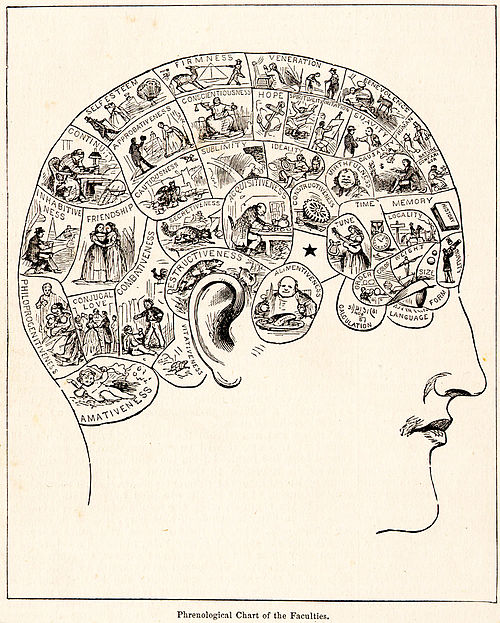Portal:Psychiatry
The Psychiatry Portal Psychiatry is the medical specialty devoted to the diagnosis, treatment, and prevention of deleterious mental conditions. These include matters related to cognition, perceptions, mood, emotion, and behavior. Initial psychiatric assessment of a person begins with creating a case history and conducting a mental status examination. Laboratory tests, physical examinations, and psychological tests may be conducted. On occasion, neuroimaging or neurophysiological studies are performed. Mental disorders are diagnosed in accordance with diagnostic manuals such as the International Classification of Diseases (ICD), edited by the World Health Organization (WHO), and the Diagnostic and Statistical Manual of Mental Disorders (DSM), published by the American Psychiatric Association (APA). The fifth edition of the DSM (DSM-5) was published in May 2013. (Full article...) Selected article Selected image A human skull mapped according to phrenology (1883), early precursor to modern psychiatry and neuroscience, now considered a pseudoscience image credit: public domain
WikiProjectsSelected biography General imagesThe following are images from various psychiatry-related articles on Wikipedia.
Related portalsTopicsSubcategoriesAssociated WikimediaThe following Wikimedia Foundation sister projects provide more on this subject:
Discover Wikipedia using portals |

































